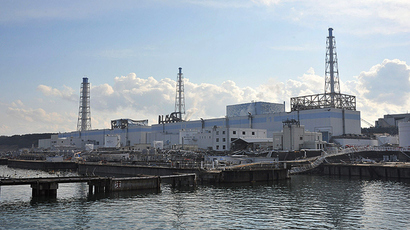‘Duct tape, wire nets’ were used to mend Fukushima water tanks - worker

As TEPCO began preparations for the cleaning of the drainage system with tons of leaked radioactive water at the Fukushima power plant,a former employee reveals the reason for so many leaks was cost cutting measures such as using duct tape,Asahi reported.
Yoshitatsu Uechi, auto mechanic and tour-bus driver, worked at
the devastated nuclear power plant between July 2 and Dec. 6,
2012, according to Asahi Shimbun report. He was one of the 17
workers from Okinawa Prefecture sent to work at the crippled
nuclear plant in 2012 to create new places to store contaminated
water.
The earthquake in March 2011 triggered a tsunami that hit Japan’s
coast, damaging the Fukushima Daiichi plant. The catastrophe
caused the meltdown of three nuclear reactors at the facility,
leading to the worst nuclear disaster since Chernobyl.
The water used to cool the reactors has been leaking into the
soil and contaminating the ground water on the premises of the
nuclear facility, with some escaping into the Pacific Ocean.
The 48 year old Japanese man said that workers were sent to
various places in Fukushima, including an area called H3 with
high radiation levels.
In one of those cases in October 2012, Uechi was given a task to
cover five or six storage tanks without lids in the “E” area
close to H3 as it was raining, the Japanese paper reported. When
he climbed to the top of the 10-meter-high tank Uechi found white
adhesive tape covering an opening of about 30 centimeters. After
using a blade to remove the tape he applied a sealing agent on
the opening and fit a steel lid fastening it with bolts.
According to instructions he was to use four bolts, though the
lid had eight bolt holes.
According to the employee, his colleagues later told him that the
use of adhesive tape was a usual practice to deal with the
problem of sealing in radioactive water.
“I couldn’t believe that such slipshod work was being done,
even if it was part of stopgap measures,” Uechi told The
Asahi Shimbun.
Among other makeshift cost-cutting measures was the use of
second-hand materials. Uechi also said that wire nets were used
instead of reinforcing bars during the placement of concrete for
storage tank foundations. In addition, waterproof sheets were
applied along the joints inside flange-type cylindrical tanks to
save on the sealing agent used to join metal sheets of the
storage tanks. Rain and snow had washed away the anti-corrosive
agent applied around clamping bolts, reducing the sealing effect,
Uechi added. According to the Fukushima worker, many of the tanks
were later found to be leaking contaminated water.
On Saturday, workers at Fukushima Daiichi began preparations for
cleaning the plant’s drainage system that contains more than
20,000 tons of water with high levels of radioactive substances,
according to Tokyo Electric Power Company (TEPCO), the plant’s
operator responsible for the clean-up.
In August, TEPCO detected 2.35 billion becquerels of cesium per
liter in the water located in underground passages which is
leaking into the groundwater through cracks in the drainage
tunnels. The normal level is estimated at 150 becquerels of
cesium per liter, according to EU.
The workers are to set up the special equipment to freeze the
ground around the reactors, according to TEPCO. The plan includes
plunging tubes carrying a coolant liquid deep into the ground
that would freeze the ground solid so that no groundwater could
pass through it.
Fallout researcher Christina Consolo told
RT that the contaminated water issue at the plant is a very
difficult problem to solve.
“The water build-up is an extraordinarily difficult problem
in and of itself, and as anyone with a leaky basement knows,
water always 'finds a way.’
She added that as “the site has been propped up with duct
tape and a kick-stand for over two years. Many of their 'fixes'
are only temporary, as there are so many issues to address, and
cost always seems to be an enormous factor in what gets
implemented and what doesn't.”













